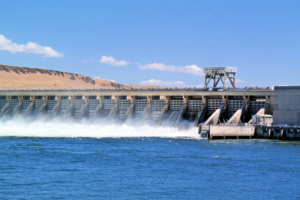IEM Insights: Key Resiliency Components of the Infrastructure Bill
 On Saturday, November 6, Congress passed H.R.3684, Infrastructure Investment and Jobs Act, and on Monday, November 15, the President will sign into law this historic Bipartisan Infrastructure Bill. Not only will this bill provide needed resources and authority to help rebuild America’s roads, bridges and rail, and also improve access to clean water and high-speed internet and focus on resilience and climate adaptation in an equitable way. State, local, tribal, and territorial leaders should take note of the impressive investments in disaster mitigation and resilience, both as we repair and rebuild the country’s infrastructure and as we proactively look to lessen the impacts of extreme weather and climate disasters. Several of these provisions will increase resources available through programs administered by the Federal Emergency Management Agency (FEMA).
On Saturday, November 6, Congress passed H.R.3684, Infrastructure Investment and Jobs Act, and on Monday, November 15, the President will sign into law this historic Bipartisan Infrastructure Bill. Not only will this bill provide needed resources and authority to help rebuild America’s roads, bridges and rail, and also improve access to clean water and high-speed internet and focus on resilience and climate adaptation in an equitable way. State, local, tribal, and territorial leaders should take note of the impressive investments in disaster mitigation and resilience, both as we repair and rebuild the country’s infrastructure and as we proactively look to lessen the impacts of extreme weather and climate disasters. Several of these provisions will increase resources available through programs administered by the Federal Emergency Management Agency (FEMA).
Here are some key provisions and additional resources to be on the lookout for:
SEC. 40102. HAZARD MITIGATION USING DISASTER ASSISTANCE.
This provision amends Section 404 of the Robert T. Stafford Disaster Relief and Emergency Assistance Act (Stafford Act), which authorizes FEMA Hazard Mitigation Grant Program (HMGP), to explicitly authorize and an eligible project wildfire mitigation efforts, including the “the installation of fire-resistant wires and infrastructure and the undergrounding of wires’’.
SEC. 40803. WILDFIRE RISK REDUCTION.
This provision requires the establishment a grant program for communities to 1) develop or revise a community wildfire protection plan or 2) carry out projects described in a community wildfire protection plan. Subject to appropriations, grants for protection plans can be up to $250,000 and for projects up to $10 million. A 10% non-federal cost share is required for planning grants; a 25% non-federal cost share is required for projects. Eligible communities must have adopted an ordinance or regulation that requires the construction of new roofs on buildings to adhere to standards that are similar to, or more stringent than the roof construction standards established by the National Fire Protection Association or an applicable model building code established by the International Code Council.
SEC. 70204. REPORT ON RECOMMENDATIONS TO MITIGATE AND MANAGE WILDLAND FIRES.
The Bipartisan Infrastructure Bill requires the establishment of a Commission to issue a report within one year with recommendations to prevent, mitigate, suppress, and manage wildland fires. This report is to include an evaluation of FEMA’s Building Resilient Infrastructure and Communities (BRIC) grant program, including the definition of “small impoverished community”, and HMGP.
BRIC Program
The Bill appropriates an additional $1 billion to FEMA’s BRIC program, $200 million each year, Fiscal Years 2022-2026. These funds are IN ADDITION TO the 6% set aside being generated from on-going disaster recovery activities.
FLOOD MITITGATION ASSISTANCE
The Bill also appropriates $3.5 billion for flood mitigation actions and for flood mitigation assistance under the National Flood Insurance Fund, $700 million each year, Fiscal Years 2022-2026. FEMA’s Flood Mitigation Assistance (FMA) grant program provides federal funding to help states and communities pay for cost effective ways to reduce or eliminate the long-term risk of flood damage to structures that are insured under the National Flood Insurance Program (NFIP).
HAZARD MITIGATION REVOLVING LOAN FUNDS
The Bill appropriates $500 million for the purpose of providing grants to entities to establish hazard mitigation revolving loan funds, as authorized by the Safeguarding Tomorrow through Ongoing Risk Mitigation Act of 2020 or the STORM Act, $100 million each year for Fiscal Years 2022-2026.
DAM SAFETY GRANTS
The Bill appropriates $733 million for FEMA’s Dam Safety Program, carving out no less than $75 million for the removal of dams.
STATE AND LOCAL CYBERSECURITY GRANT PROGRAM
The Bipartisan Infrastructure bill creates a grant program to be managed by FEMA to provide grants to eligible entities to address cybersecurity risks and cybersecurity threats to information systems owned or operated by, or on behalf of, State, local, or Tribal governments. The Bill also appropriates $1 billion for these grants, $200 million each year for Fiscal Years 2022-2025.
Insights by Pam Williams, IEM’s Director Mitigation and Resilience




